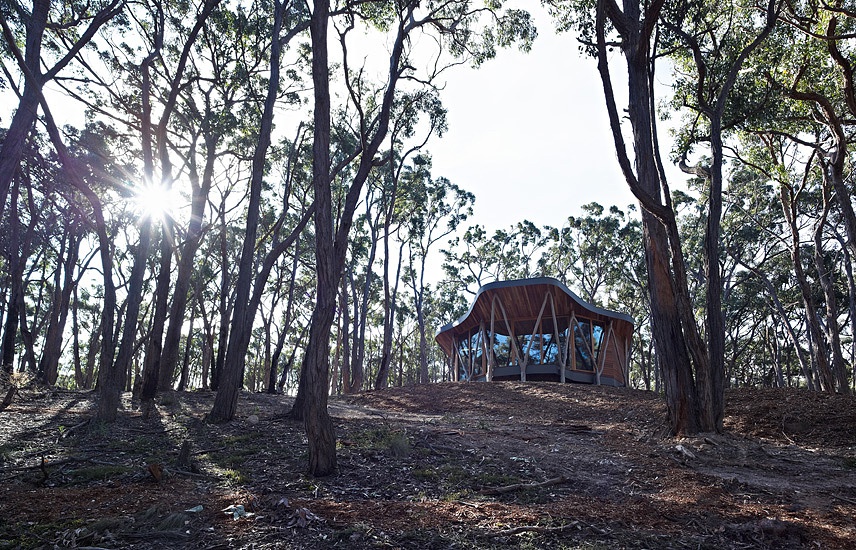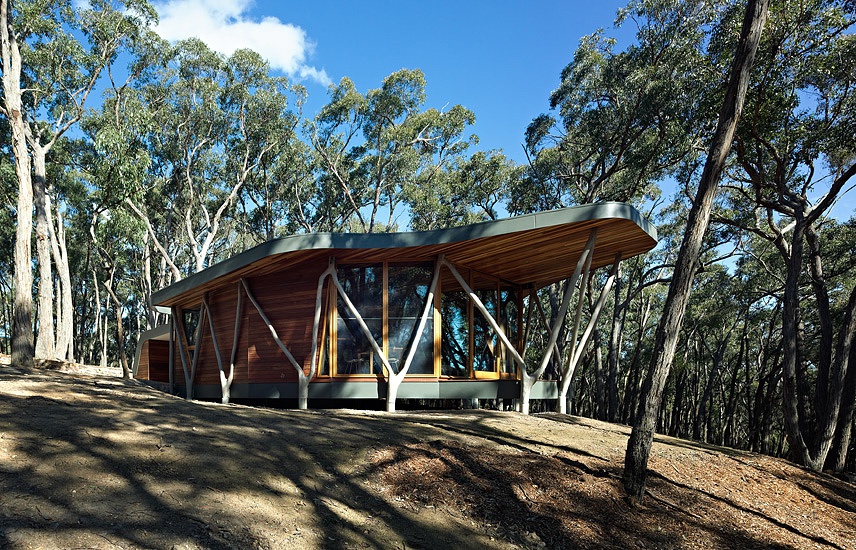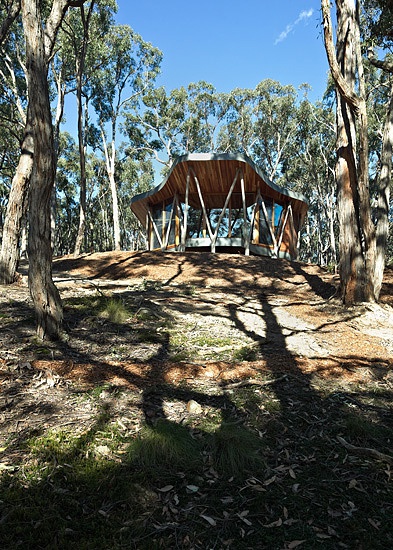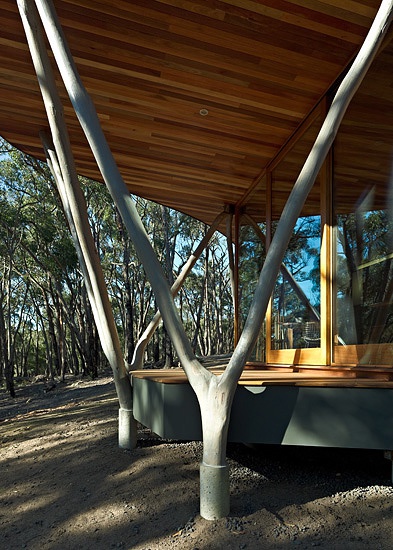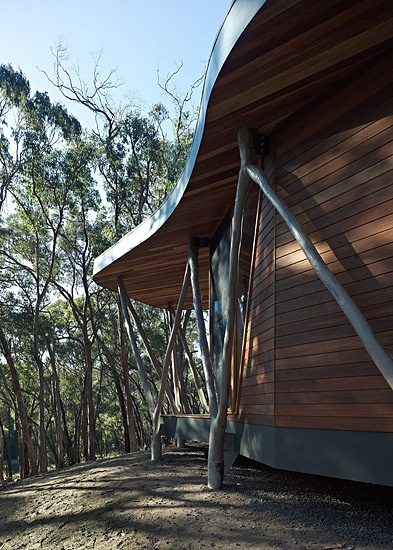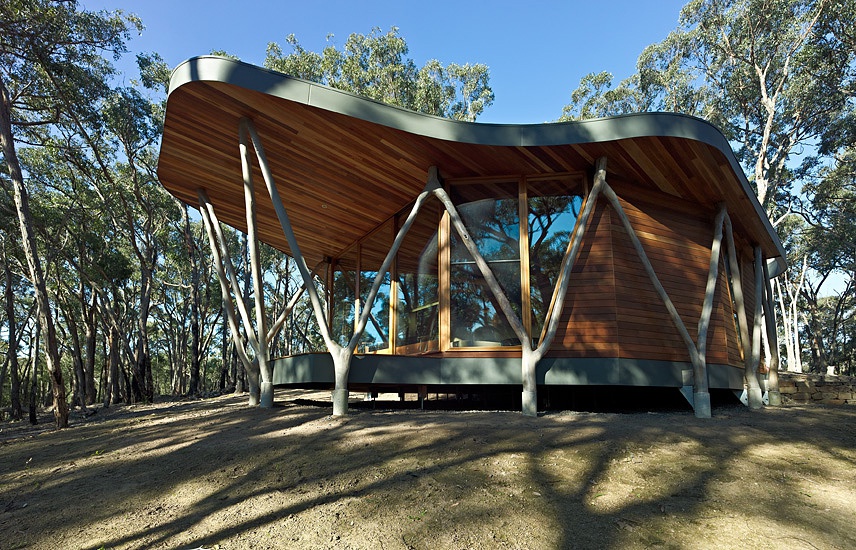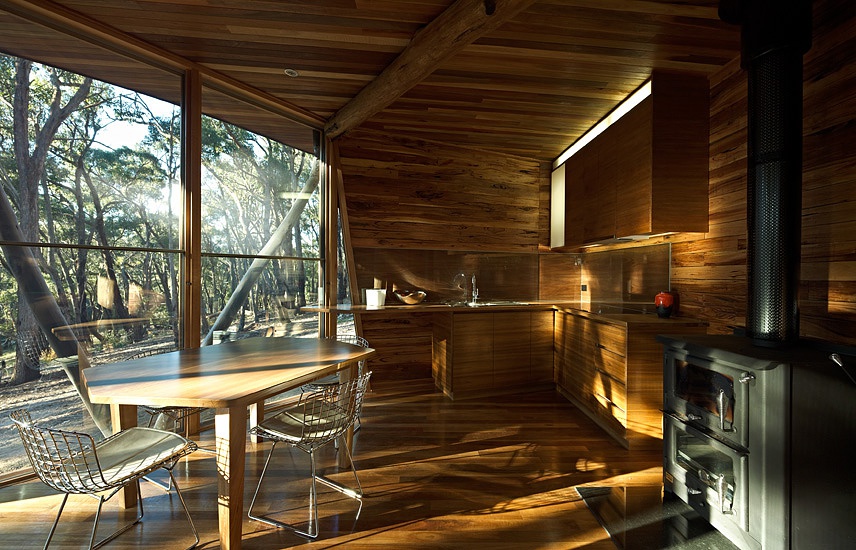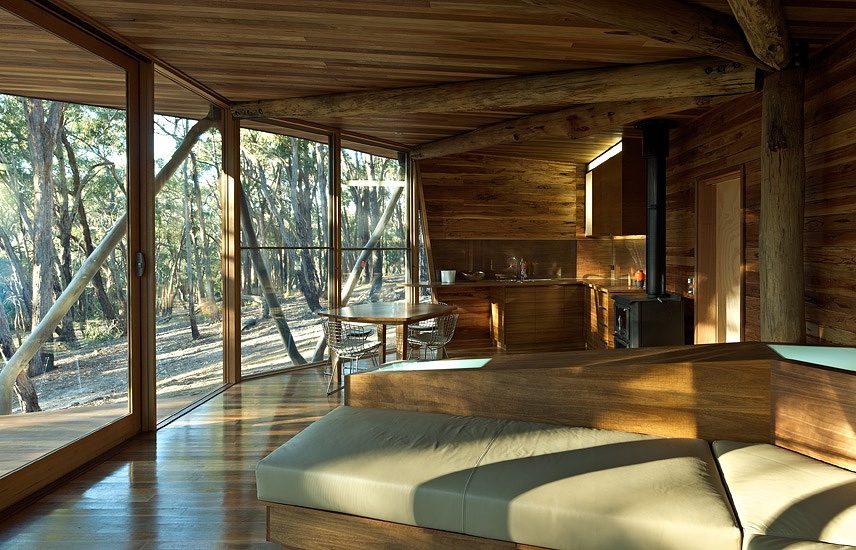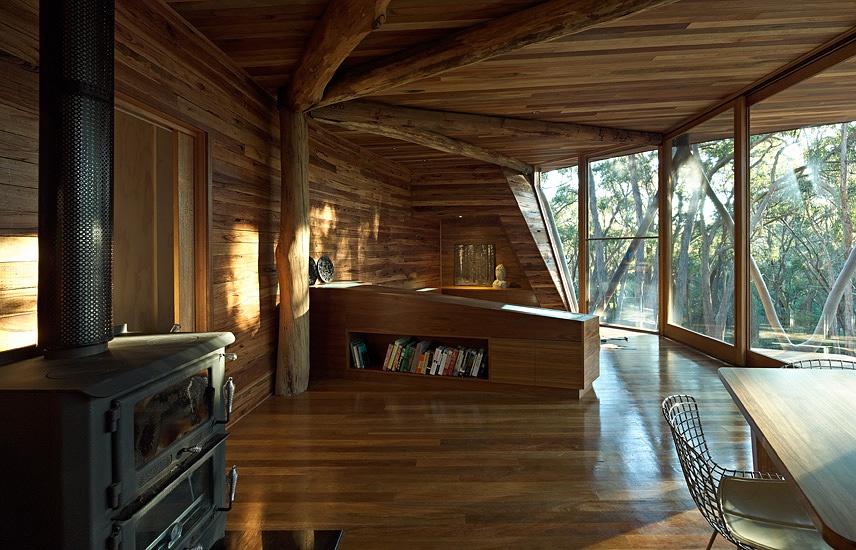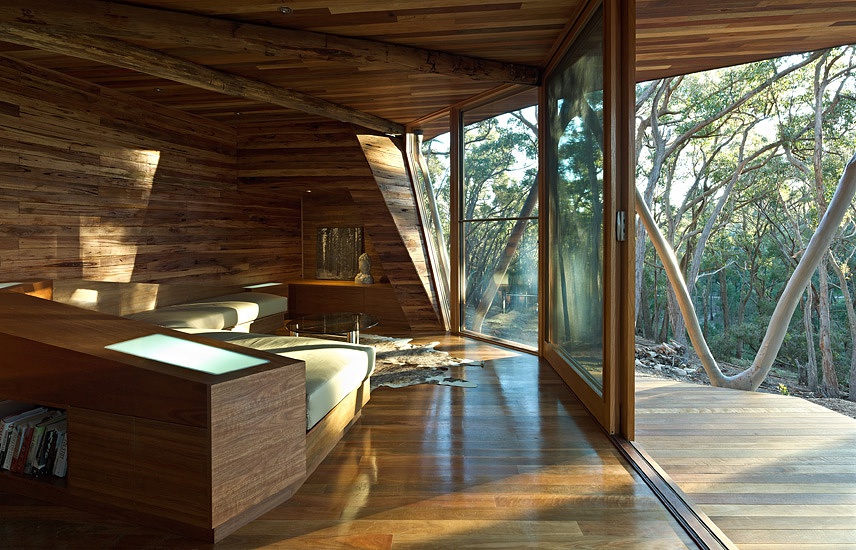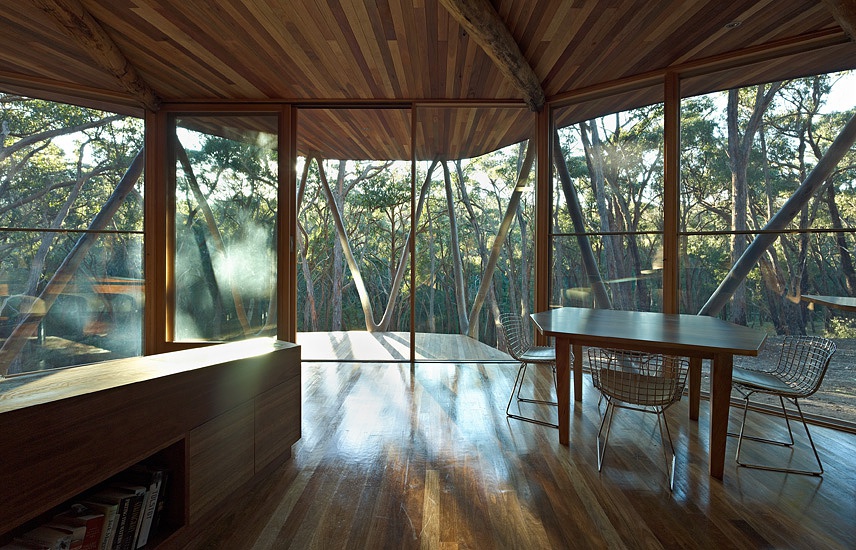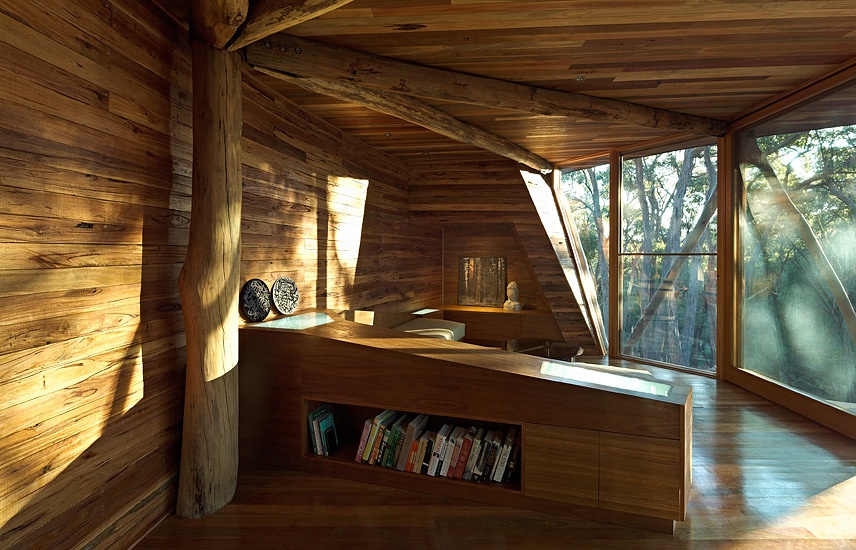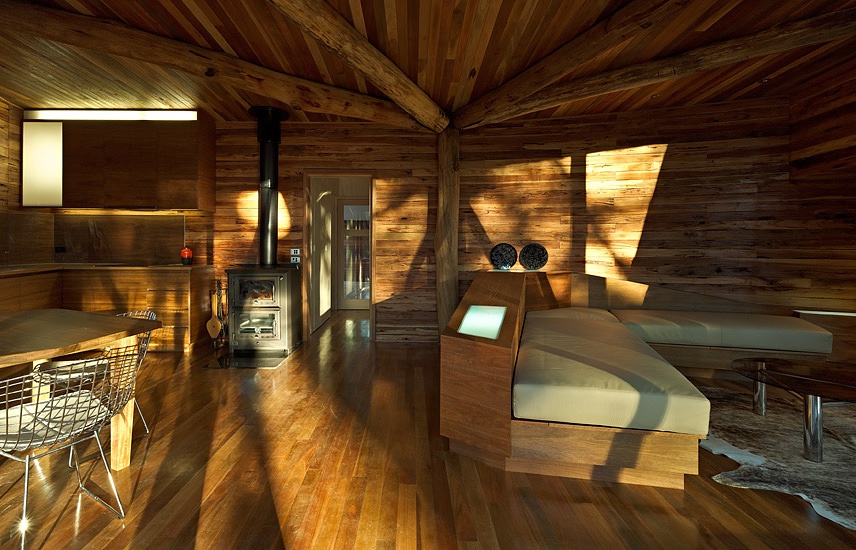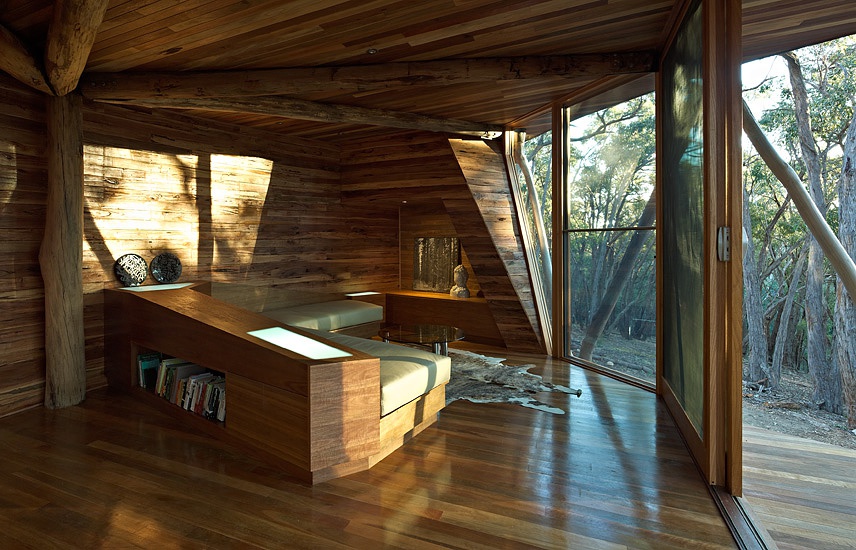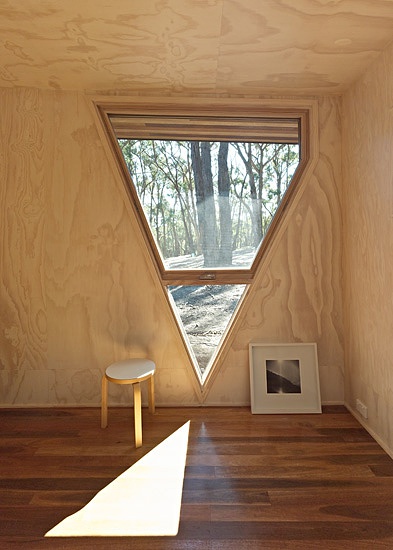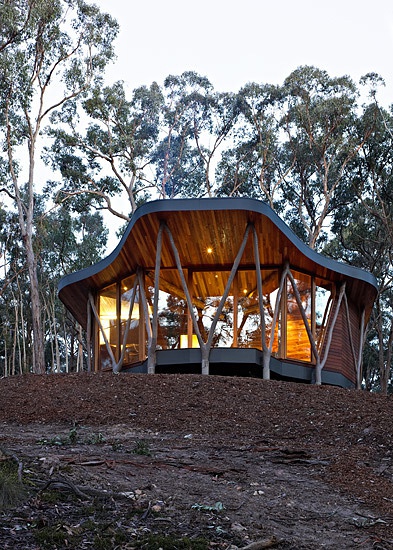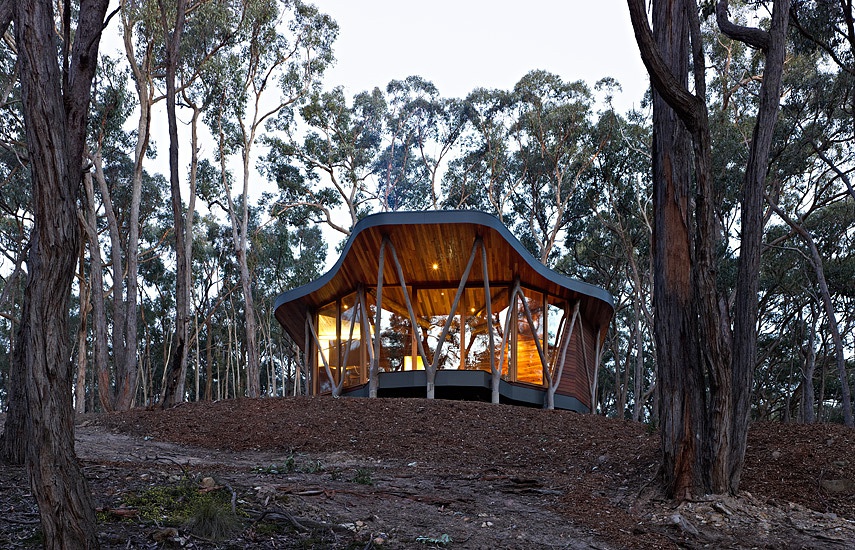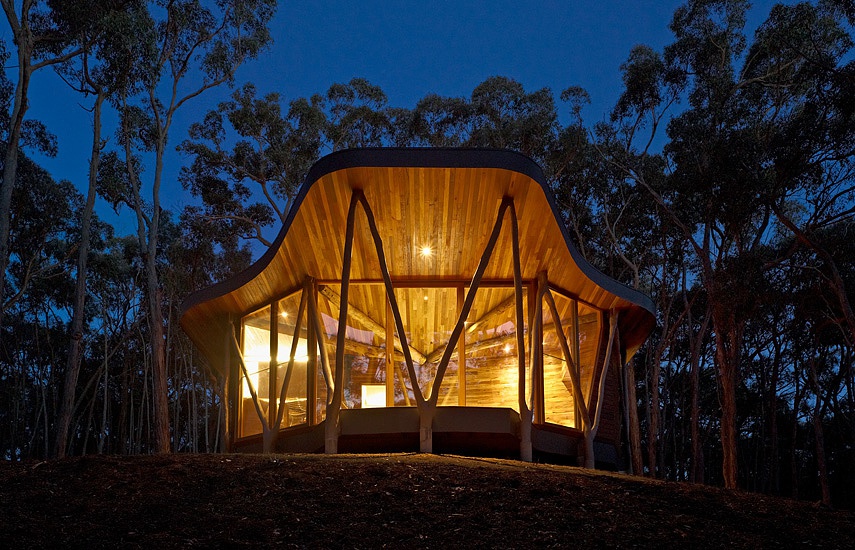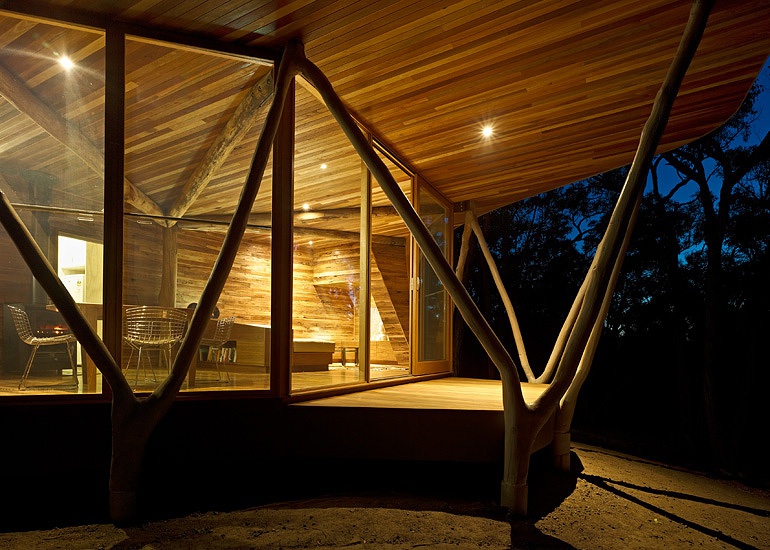Trunk House
Architecture
Paul Morgan Architects
17.11.11
In beautiful forest of extant Stringybark trees in Victoria’s Central Highlands rests a small cabin.
Paul Morgan Architects' initial interest was in the bleached bones of sheep and kangaroo skeletons found in forests and farms, and in the thickening of these joints, needed to carry additional loads. This interest transitioned into harnessing the natural load-bearing capacity of timber found in the region by utilizing bifurcations found in tree forks.
The advantage of these bifurcated joints - usually discarded in commercial tree logging - is their great inherent strength. The bifurcations were sourced from forest floors and farmland, and due to their age, were pre-seasoned. They were joined to straight columns with internal metal plates by a sculptor. So this ground fuel became building material. An internal column with radiating beams completed the structure, the complete triangulated system attaining great inherent strength.
Stringybark trees were removed from the site to make way for the new house. A mobile milling machine was delivered to site, and Stringybark lining boards were milled, cured on site, and then fixed internally. This resulted in a minimal carbon footprint for the sourcing and installing of the lining boards.
The design sought to achieve an almost transparent relationship with the surrounding forest, achieved through an eco-morphological transformation of ground fuel into structure.
